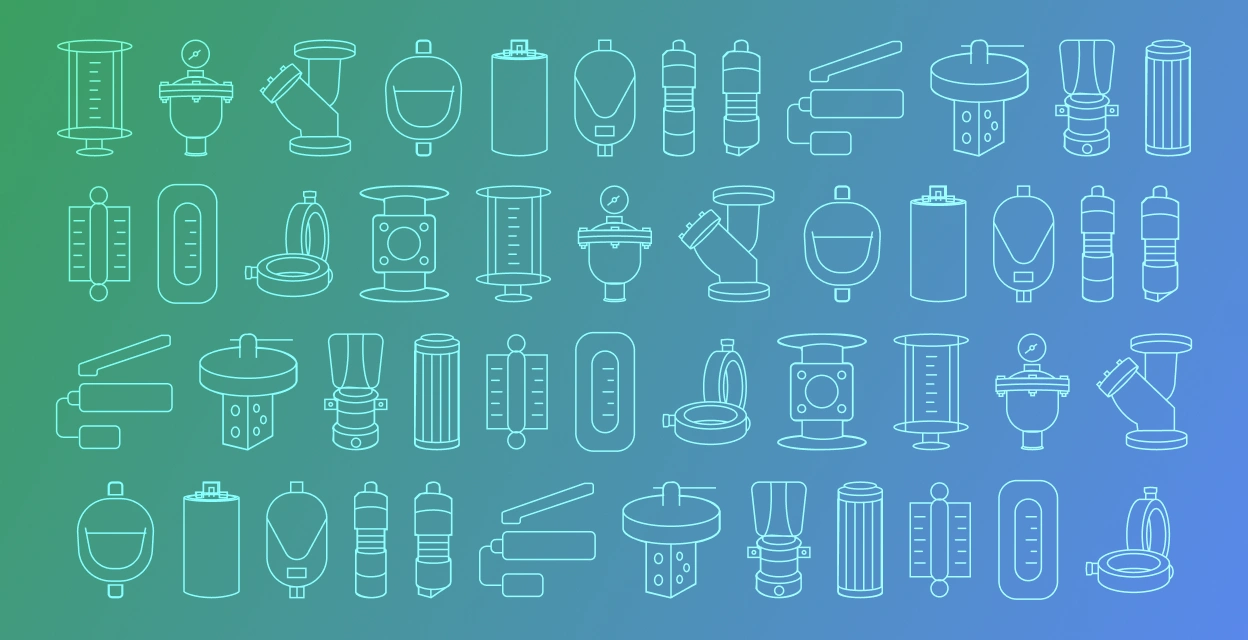Introduction: Precision Under Pressure
In today’s high-performance oil & gas and industrial systems, pressure sensors are the backbone of safety, automation, and operational reliability. From wellhead control panels (WHCPs) to chemical injection skids and hydraulic power units (HPUs), these sensors continuously monitor process conditions.
However, exposure to vibration, contamination, pressure spikes, and temperature extremes can cause sensor drift, signal loss, or complete failure. Certified pressure sensor repair and calibration services - like those offered by Petronash Engineering Services Pvt. Ltd. - ensure operational reliability.
“A calibrated sensor doesn’t just measure - it protects, predicts, and prevents.” - S. Arun Prakash, Lead Instrumentation Engineer, Petronash Engineering Services Pvt. Ltd.
Why is pressure sensor repair important in hydraulic and process systems?
Because recalibrated and certified sensors ensure accurate readings, prevent shutdowns, and maintain compliance with API, ISO, and ASME standards. Expert repair restores original accuracy, signal stability, and safety integrity across critical applications.
The Role of Pressure Sensors in Process Control
Pressure sensors convert mechanical pressure into electrical signals that control system functions like shutdowns, alarms, and flow regulation.
- Hydraulic power units (HPUs)
- Wellhead control panels (WHCPs)
- Pneumatic systems & process skids
- Pipeline monitoring and pressure balancing systems
Reference: Omega Engineering - Pressure Sensors Overview Fact: Over 60% of process control failures originate from uncalibrated or malfunctioning sensors (Industrial Instrumentation Safety Report, 2024).
Common Causes of Pressure Sensor Failure
Even high-grade sensors deteriorate due to harsh field conditions:
- Overpressure events damaging sensing diaphragms
- Thermal cycling leading to calibration drift
- Fluid ingress into electrical connectors
- Mechanical vibration causing wiring fatigue
- Chemical corrosion reducing diaphragm responsiveness
Reference: IFM Sensors - Common Sensor Failure Causes Tip: Routine calibration every 6–12 months prevents sensor drift and maintains accuracy within ±0.1% of full scale.
Petronash Certified Repair & Calibration Process
Petronash employs an end-to-end OEM-level repair protocol to restore sensors to precise factory performance.
- Step 1 - Visual & Electrical Diagnostics: Verify connectors, sealing integrity, and electronic output. Functional simulation to detect drift or offset errors.
- Step 2 - Disassembly & Cleaning: Remove pressure ports and diaphragms. Clean using non-reactive solvents under ESD-safe conditions.
- Step 3 - Component Replacement: Install OEM-grade diaphragms, seals, or transducer elements. Replace O-rings and gaskets with chemical-resistant materials (Viton/PTFE).
- Step 4 - Calibration & Verification: Recalibrate using traceable master gauges per ISO 17025 standards. Test for linearity, hysteresis, repeatability, and zero-span performance.
- Step 5 - Certification & Documentation: Provide calibration certificates with traceability to NABL/ISO standards. Full QC reports for regulatory audits.
Reference: ISO 17025 Calibration Standards Outcome: Restored accuracy and full compliance with OEM specifications.
Compliance & Standards
Petronash ensures all repaired pressure sensors meet strict international norms:
- API 6A / 16D / 17F - Control system and safety instrumentation
- ASME Section VIII Div. 1 - Pressure equipment safety
- ISO 9001 / 14001 / 45001 - Quality, environmental, and safety management
- ISO 17025 - Calibration & testing traceability
- NACE MR0175 / ISO 15156 - Material compatibility for sour service
Reference: API Standards - Instrumentation Compliance Advantage: Certifies that every pressure reading is both accurate and globally compliant.
Types of Pressure Sensors Serviced
- Analog and digital pressure transmitters
- Gauge and absolute pressure sensors
- Differential and dual-sensor systems
- Hydraulic interface transducers
- Explosion-proof and flameproof enclosures
Reference: Fluke Calibration - Pressure Sensor Testing Methods Result: Multi-brand, multi-type compatibility with quick turnaround and certified accuracy.
Preventive Maintenance Practices
- Calibrate every 6–12 months depending on duty cycle
- Store spares in ESD-safe, moisture-free packaging
- Avoid over-tightening during installation
- Inspect connectors for corrosion or contamination
- Use clean hydraulic fluid to prevent sensor clogging
Reference: Hydraulic & Pneumatics - Sensor Maintenance Guide Tip: Clean and calibrated sensors enhance process stability and energy efficiency.
Why Choose Petronash for Pressure Sensor Repair Services
Petronash Engineering Services Pvt. Ltd. provides comprehensive repair, calibration, and testing for pressure sensors across all industrial sectors.
Petronash Edge:
- 20 + years of hydraulic & instrumentation expertise
- In-house pressure calibration benches up to 20,000 psi
- NABL-traceable test instruments & digital data logging
- Third-party witnessed calibration (BV, DNV, ABS)
- OEM-trained service technicians
- Full traceability with serial-number-based documentation
- ISO 14001-compliant eco-friendly repair protocols
Reference: Bureau Veritas - Calibration Equipment Certification Outcome: OEM-level performance restored, compliance assured, and downtime minimized.
FAQs
- What is the purpose of a pressure sensor in hydraulic systems?
It measures fluid pressure and sends a signal for control, monitoring, or safety functions. - How often should pressure sensors be calibrated?
At least once a year or after any exposure to extreme pressure or temperature events. - Can pressure sensors be repaired?
Yes. Petronash restores sensors through OEM-grade parts, recalibration, and certification. - What are signs that a pressure sensor needs repair?
Drift in readings, unstable output, no signal response, or visible fluid leakage. - Are Petronash calibration reports traceable?
Yes. All certificates are ISO 17025 and NABL traceable, ensuring regulatory compliance. - What standards govern pressure sensor servicing?
API 6A, ASME Sec. VIII, ISO 9001, ISO 17025, and NACE MR0175. - Why choose Petronash?
Because Petronash delivers certified repair and calibration with in-house testing, third-party witnessing, and over 20 years of reliability in oil & gas instrumentation.
When accuracy defines safety, rely on the engineers who define precision.
Petronash Engineering Services Pvt. Ltd. offers certified pressure sensor repair, recalibration, and documentation - ensuring your systems stay reliable, compliant, and efficient.
Why Petronash:
- 20 + years of oil & gas instrumentation expertise
- Certified calibration & repair facilities in UAE and India
- Compliance with API, ASME, and ISO 17025 standards
- Third-party inspection by DNV, BV, or ABS
- Real-time calibration data logging with full traceability
- Rapid on-site support and global client coverage
Precision you can measure. Reliability you can trust.
📩 Email: [email protected]
🌐 Website: www.petronashengineering.com
 Back To Blogs
Back To Blogs